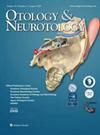人工耳蜗植入术后何时开始计算机听觉训练?对生活质量和语音识别的影响。
IF 2
3区 医学
Q3 CLINICAL NEUROLOGY
引用次数: 0
摘要
目的基于计算机的听觉训练(CBAT)已被证明可改善成年人工耳蜗(CI)使用者的效果。本研究评估了 CI 新用户在激活后 3 个月内或更晚开始 CBAT 是否会影响 CI 的疗效。主要结果测量激活后早期(<3 个月)和晚期(3-12 个月)开始使用 CBAT 资源的 CI 受助者之间的语音识别评分和 CIQOL-35 资料评分改善情况。结果共有 43 名 CI 受助者在激活后 3 个月内(早期)开始使用 CBAT,22 名在 3 个月后(晚期)开始使用。在激活后 3 个月内使用 CBAT 的患者在辅音-核-共音词(CNCw)(48.3 ± 24.2% vs 27.8 ± 24.9%;d = 0.84)、安静的 AzBio 句子(55.与尚未开始使用 CBAT 的患者相比,在激活后 3 个月,AzBio 句子(55.1 ± 28.0% vs 35.7 ± 36.5%;d = 0.62)和 CIQOL-35 听力领域得分(18.2 ± 16.3 vs 6.9 ± 12.9,d = 0.73 [0.023, 1.43])均有所提高。然而,在激活后 12 个月,即所有 CI 接受者都开始 CBAT 之后,早期或晚期开始 CBAT 的患者在语音识别评分方面没有发现差异(CNCw:d = 0.26 [-0.35, 0.88];AzBio:d = 0.结论使用自主计算机软件(CBAT)进行听力训练可能会为新的成年 CI 接受者带来语音识别和生活质量方面的益处。虽然早期使用者在激活后 3 个月的效果改善程度高于后期使用者,但两组使用者在激活后 12 个月的效果相似。本文章由计算机程序翻译,如有差异,请以英文原文为准。
When to Start Computer-Based Auditory Training After Cochlear Implantation: Effects on Quality of Life and Speech Recognition.
OBJECTIVE
Computer-based auditory training (CBAT) has been shown to improve outcomes in adult cochlear implant (CI) users. This study evaluates in new CI users whether starting CBAT within 3 months of activation or later impacts CI outcomes.
STUDY DESIGN
Prospective natural experiment.
SETTING
Tertiary academic medical center.
PATIENTS
Sixty-five new adult CI users.
INTERVENTIONS
CBAT use over the first-year postactivation.
MAIN OUTCOME MEASURES
Speech recognition scores and CIQOL-35 Profile score improvements between CI recipients who started CBAT resources early (<3 mo) and late (3-12 mo) postactivation.
RESULTS
A total of 43 CI recipients started using CBAT within 3 months postactivation (early) and 22 after 3 months (late). Patients who used CBAT within 3 months postactivation showed significantly greater improvement in consonant-nucleus-consonant words (CNCw) (48.3 ± 24.2% vs 27.8 ± 24.9%; d = 0.84), AzBio Sentences in quiet (55.1 ± 28.0% vs 35.7 ± 36.5%; d = 0.62), and CIQOL-35 listening domain scores (18.2 ± 16.3 vs 6.9 ± 12.9, d = 0.73 [0.023, 1.43]), at 3 months postactivation, compared to those who had not yet initiated CBAT. However, by 12 months postactivation, after which all CI recipients had started CBAT, there were no differences observed between patients who started CBAT early or late in speech recognition scores (CNCw: d = 0.26 [-0.35, 0.88]; AzBio: d = 0.37 [-0.23, 0.97]) or in any CIQOL global or domain score (d-range = 0.014-0.47).
CONCLUSIONS
Auditory training with self-directed computer software (CBAT) may yield speech recognition and quality-of-life benefits for new adult CI recipients. While early users showed greater improvement in outcomes at 3 months postactivation than users who started later, both groups achieved similar benefits by 12 months postactivation.
求助全文
通过发布文献求助,成功后即可免费获取论文全文。
去求助
来源期刊

Otology & Neurotology
医学-耳鼻喉科学
CiteScore
3.80
自引率
14.30%
发文量
509
审稿时长
3-6 weeks
期刊介绍:
Otology & Neurotology publishes original articles relating to both clinical and basic science aspects of otology, neurotology, and cranial base surgery. As the foremost journal in its field, it has become the favored place for publishing the best of new science relating to the human ear and its diseases. The broadly international character of its contributing authors, editorial board, and readership provides the Journal its decidedly global perspective.
 求助内容:
求助内容: 应助结果提醒方式:
应助结果提醒方式:


